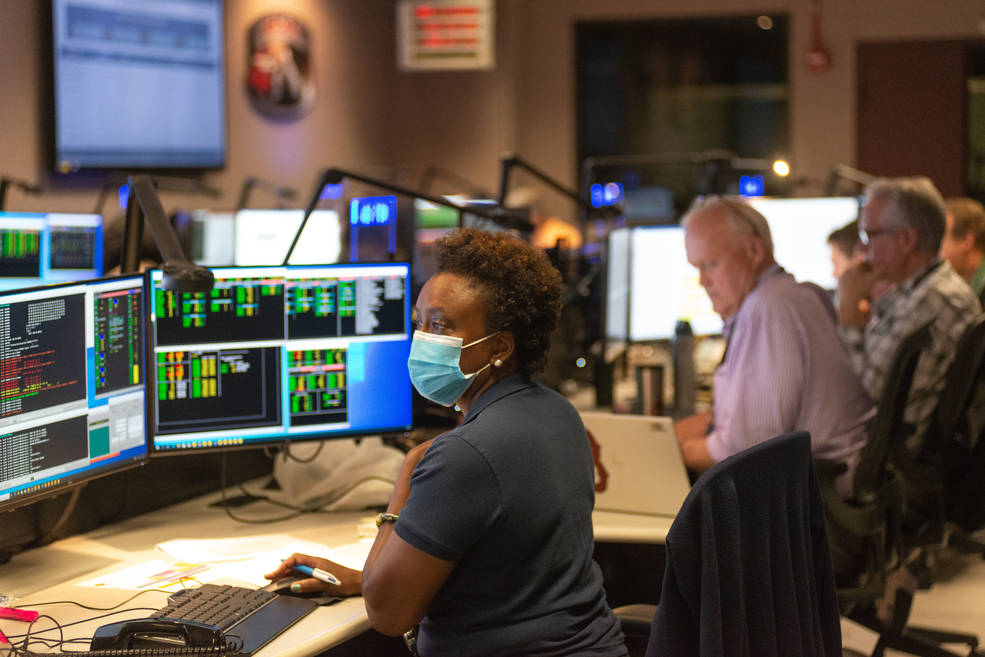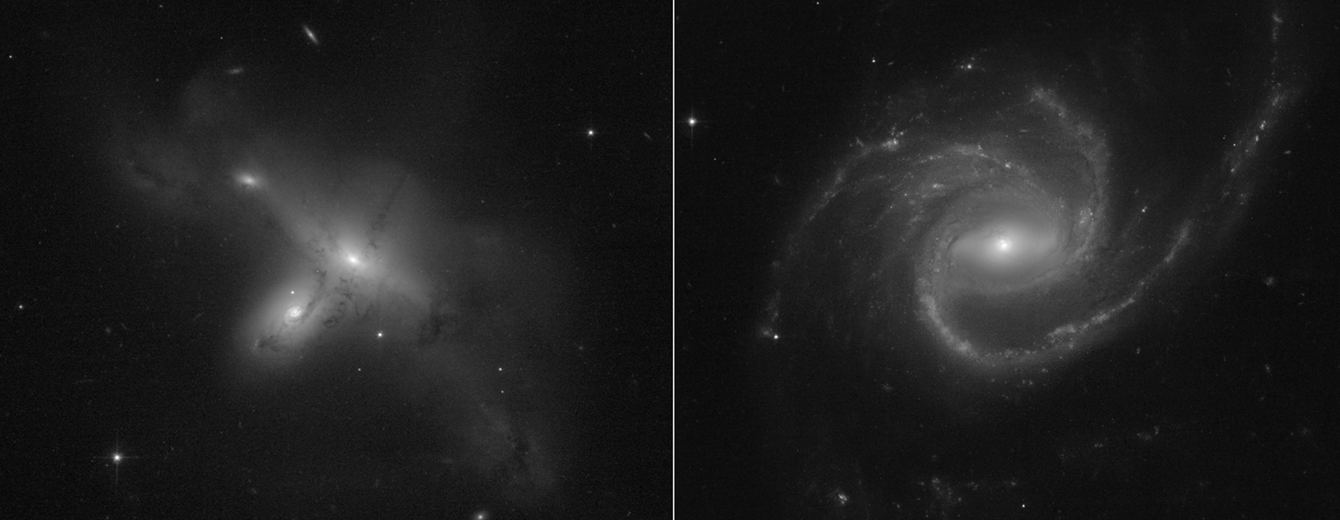The astronomy community breathed a huge sigh of relief earlier this week when the Space Telescope Science Institute announced the Hubble Space Telescope’s major computer issues had been fixed. In a grueling month of recovery work, every expert – even retired Hubble engineers and scientists — was brought in for consultation. Their ultimate success is a tribute to the legacy of problem-solving and innovation NASA has been famous for over the years. And now, the telescope is back doing what it was built to do, taking incredible pictures of the cosmos and sending them down to Earth.
Here are the first images since the long-distance repair, two pictures of galaxies. One shows a galaxy with unusual extended spiral arms, and the other is the first high-resolution view of an intriguing pair of colliding galaxies.
NASA says that other initial targets for Hubble include globular star clusters and aurorae on the giant planet Jupiter.
All of Hubble’s science instruments have now returned to full operation, following the remote recovery work to repair a persistent and tricky computer anomaly that basically shut down the venerable 31-year-old telescope. The work was done from the Goddard Spaceflight Center in Maryland — with some experts still working from home with COVID-19 restrictions — as Hubble orbited 547 km (340 miles) above Earth.
The problem came from a glitch with Hubble’s payload computer, which controls and coordinates the observatory’s onboard science instruments. The computer problem automatically placed Hubble’s science instruments into safe mode, and initial work-arounds failed to create a lasting solution.
That’s when Hubble alumni were called upon to bring their decades of expertise with Hubble. NASA said that retired staff who helped build the telescope provided critical expertise for determining what needed to be done to recover access to the computer. Other former team members scoured through Hubble’s original paperwork, finding 30- to 40-year-old documents that helped the team chart a path forward.
“That’s one of the benefits of a program that’s been running for over 30 years: the incredible amount of experience and expertise,” said Nzinga Tull, Hubble systems anomaly response manager at Goddard, in a statement. “It’s been humbling and inspiring to engage with both the current team and those who have moved on to other projects. There’s so much dedication to their fellow Hubble teammates, the observatory, and the science Hubble is famous for.”
Together, the old and new team members worked their way through various potential problems, and eventually methodically identified the cause, a problem with the Science Instrument and Command & Data Handling unit, where the payload computer resides. The decision was made to switch to the backup side of the Science Instrument and Command & Data Handling unit, and then a plan was developed for how to do it. Over 50 experts reviewed the process before engineers engaged in 15 straight hours of commanding from the ground, which included safely turning off the main computer and then using a backup computer on the telescope.

Credits: NASA GSFC/Rebecca Roth
“Several boxes also had to be powered on that were never turned on before in space, and other hardware needed their interfaces switched,” said Jim Jeletic, Hubble deputy project manager at Goddard. “There was no reason to believe that all of this wouldn’t work, but it’s the team’s job to be nervous and think of everything that could go wrong and how we might compensate for it. The team meticulously planned and tested every small step on the ground to make sure they got it right.”
On July 15, the team determined the switch was successful. The science instruments were then successfully turned back on, with Hubble taking scientific data once again on July 17.
NASA said that most observations missed while science operations were suspended will be rescheduled, so look for more data and images to come from the famous space telescope.

